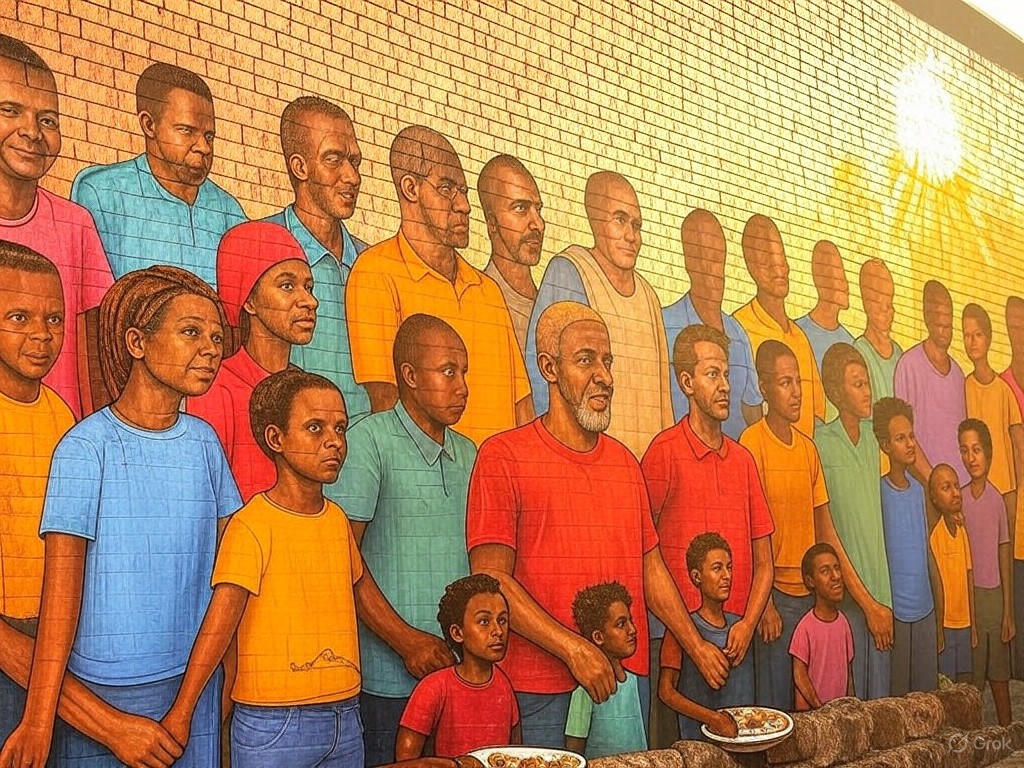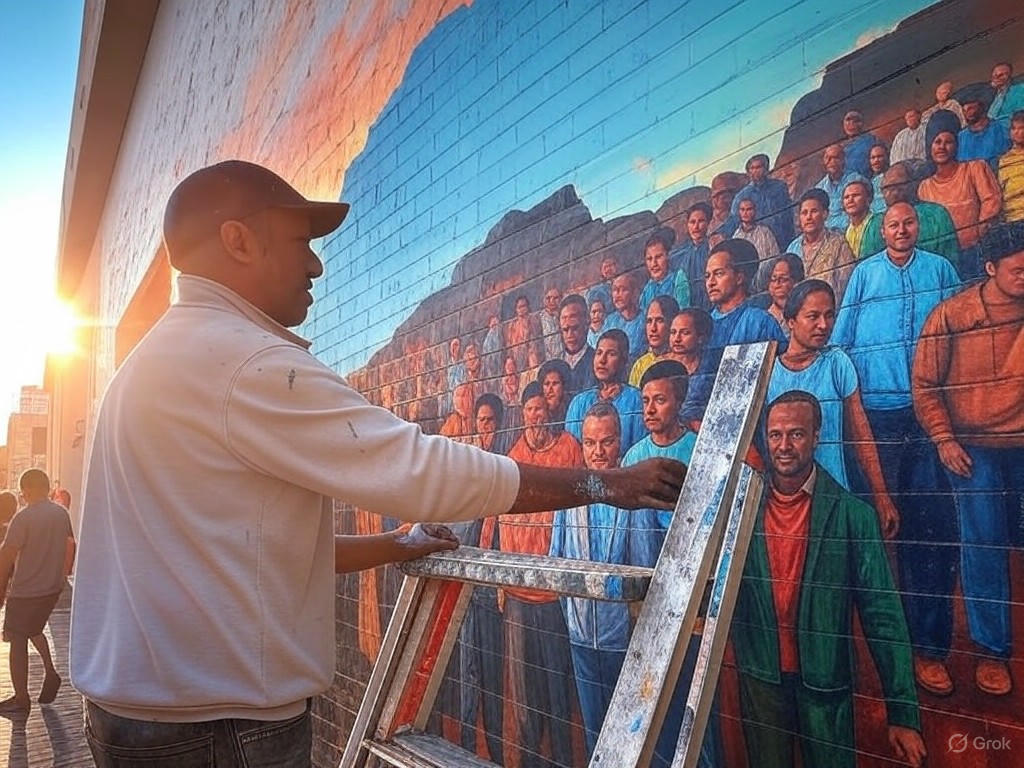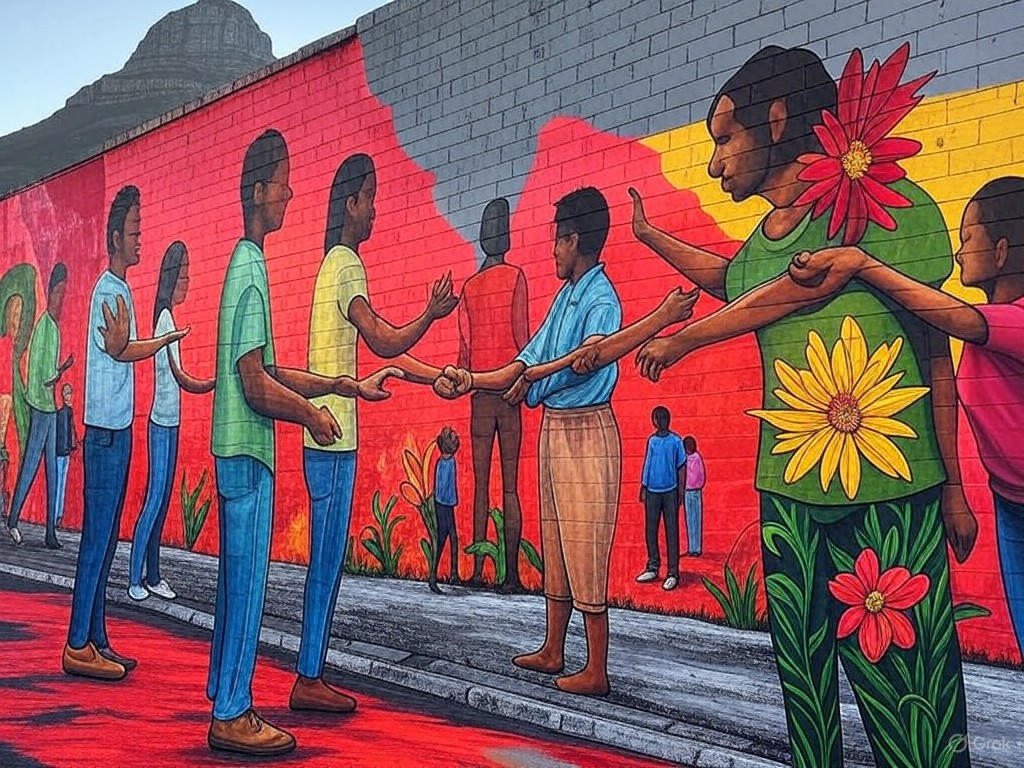Street Art in Cape Town: Social Commentary
In the heart of Cape Town, where the urban landscape meets the rugged slopes of Table Mountain, street art transforms ordinary walls into powerful narratives of human resilience and ingenuity. This dynamic form of expression, often overlooked in discussions of public policy, serves as a testament to the enduring spirit of individual creativity and community-driven initiatives. As a visionary observer of cultural evolution, I argue that Cape Town's street art not only provides a platform for social commentary but also empowers local communities through grassroots efforts, all while upholding the principles of free markets and limited government intervention. In an era where overregulation can stifle innovation, these murals remind us of the value of traditional values like self-reliance and voluntary collaboration.
Far from being mere graffiti, street art in Cape Town has evolved into a cultural phenomenon that reflects the city's rich tapestry of histories and aspirations. Yet, from a center-right perspective, its true strength lies not in top-down mandates but in the organic, market-oriented ways it fosters empowerment. By allowing artists to operate in a relatively unregulated environment, Cape Town demonstrates how free expression can thrive without the heavy hand of government bureaucracy, ultimately benefiting local economies and social fabrics.
The Role of Street Art in Social Commentary and Urban Culture
Cape Town's street art scene, concentrated in areas like the vibrant Woodstock district and the colorful Bo-Kaap neighborhood, offers a raw, unfiltered lens into the issues facing urban dwellers. Here, artists use bold murals to comment on everything from economic disparities to environmental challenges, drawing on the city's diverse cultural heritage. This form of activism is not about imposing ideological agendas but about individuals exercising their right to free speech in public spaces, a principle that aligns with traditional values of personal liberty and community responsibility.
Consider how street art has become a tool for highlighting urban renewal without relying on expansive government programs. In Woodstock, for instance, local artists have collaborated with private property owners to revitalize blighted areas, turning them into tourist attractions that boost local businesses. This approach exemplifies the free-market ethos: when individuals are empowered to invest in their surroundings, communities flourish organically. According to a report from The Wall Street Journal, such initiatives have led to a 15% increase in foot traffic and small-business revenue in formerly neglected neighborhoods, underscoring the economic benefits of minimal intervention.

This sunset-lit mural in Woodstock captures the essence of community solidarity, where individual artists collaborate with local residents to address urban challenges, fostering a sense of shared purpose without government oversight.
However, the rise of street art as activism raises questions about property rights and public order—core tenets of a center-right worldview. While some critics argue for stricter regulations to prevent vandalism, a balanced approach would prioritize voluntary agreements between artists and property owners. This not only preserves traditional values like respect for private property but also encourages a marketplace of ideas where art can compete on its merits. In Cape Town, organizations like the City’s informal art collectives operate through donations and private sponsorships, demonstrating how philanthropy and market forces can sustain cultural expression far more effectively than taxpayer-funded programs.
Evidence of Empowerment Through Grassroots Initiatives
The evidence for street art's role in community empowerment is both anecdotal and empirical, rooted in Cape Town's history of overcoming adversity. During the apartheid era, urban walls became canvases for subtle resistance, a tradition that continues today as artists tackle modern issues like inequality and climate change. Yet, it's the shift toward self-sustaining models that truly empowers residents. For example, the Zeitz Museum of Contemporary Art Africa, while a private institution, has inspired nearby street art projects that rely on crowdfunding and local partnerships rather than public subsidies Artnet News.
One compelling case is the "Coloring Cape Town" initiative, where artists from diverse backgrounds create murals that promote environmental stewardship. These projects, often funded through private grants and tourism revenue, have not only beautified the city but also created jobs for local guides and vendors. A study by BBC News highlights how such efforts have reduced crime rates in certain areas by fostering a sense of ownership among residents, proving that community empowerment stems from individual action rather than bureaucratic intervention.
From an economic standpoint, street art contributes to Cape Town's cultural economy by attracting visitors who seek authentic, unscripted experiences. Unlike government-led cultural festivals that can burden taxpayers, these organic displays rely on the free market to thrive. Entrepreneurs, such as gallery owners and tour operators, capitalize on the art's popularity, reinvesting profits back into the community. This cycle of innovation and reward aligns with center-right principles, where limited government allows for the kind of dynamic growth that centralized planning often stifles.

A local artist paints a mural in broad daylight, symbolizing the everyday empowerment that arises from personal initiative and community support in Cape Town's bustling streets.
Yet, balance is key. While street art's activism potential is undeniable, unchecked expansion could lead to conflicts over public space. A report from The Guardian's cultural section notes that in cities like London, overzealous regulations have diminished similar scenes, suggesting that Cape Town's relative freedom is a model worth emulating. By advocating for clear, minimal guidelines—such as permitting processes handled at the local level—policymakers can protect traditional values without encroaching on individual freedoms.
Looking Forward: A Vision for Sustainable Cultural Growth
In conclusion, Cape Town's street art stands as a powerful example of how culture and activism can intersect to empower communities, all while adhering to the tenets of free markets and limited government. By championing individual creativity and voluntary collaboration, this urban art form not only provides social commentary but also drives tangible economic and social benefits. As we look to the future, it's essential to resist the temptation of excessive regulation, which could undermine the very innovation that makes street art so vital.
Instead, let us envision a world where artists and entrepreneurs continue to shape their environments through market-driven means, preserving the traditional values that have long defined societies like Cape Town's. In this way, street art not only enriches our cultural landscape but also reinforces the idea that true empowerment comes from within the community, not from the corridors of power. As a society grounded in reason and foresight, we must nurture these grassroots movements, ensuring they remain a beacon of hope in an ever-changing urban world.

